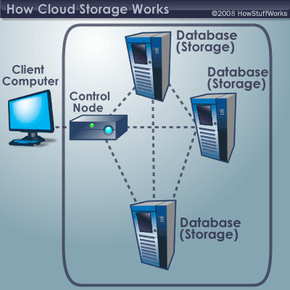Comedian George Carlin has a routine in which he talks about how humans seem to spend their lives accumulating "stuff." Once they've gathered enough stuff, they have to find places to store all of it. If Carlin were to update that routine today, he could make the same observation about computer information. It seems that everyone with a computer spends a lot of time acquiring data and then trying to find a way to store it.
For some computer owners, finding enough storage space to hold all the data they've acquired is a real challenge. Some people invest in larger hard drives. Others prefer external storage devices like thumb drives or compact discs. Desperate computer owners might delete entire folders worth of old files in order to make space for new information. But some are choosing to rely on a growing trend: cloud storage.
Advertisement
While cloud storage sounds like it has something to do with weather fronts and storm systems, it really refers to saving data to an off-site storage system maintained by a third party. Instead of storing information to your computer's hard drive or other local storage device, you save it to a remote database. The Internet provides the connection between your computer and the database.
On the surface, cloud storage has several advantages over traditional data storage. For example, if you store your data on a cloud storage system, you'll be able to get to that data from any location that has Internet access. You wouldn't need to carry around a physical storage device or use the same computer to save and retrieve your information. With the right storage system, you could even allow other people to access the data, turning a personal project into a collaborative effort.
So cloud storage is convenient and offers more flexibility, but how does it work? Find out in the next section.
Advertisement



